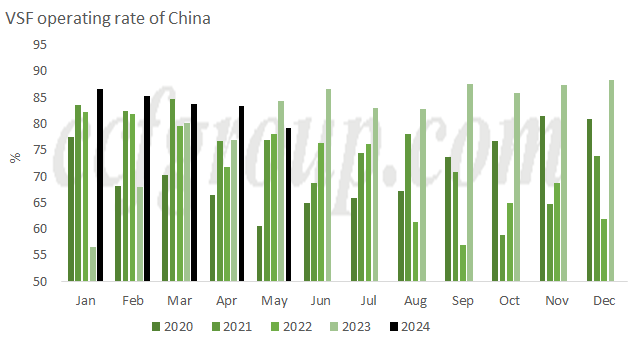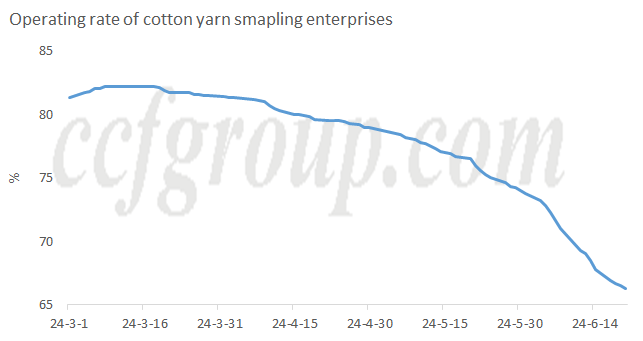Will tightness of VSF supply persist?
During the viscose industry forum in Apr this year, the author had initially anticipated a favorable industrial supply-demand pattern in 2024, excluding macroeconomic factors. However, the unexpectedly tight supply at the beginning of June was unforeseen. Therefore, this article may seem somewhat prescient in hindsight, as it attempts to analyze recent market developments.
Starting with the supply side, there has been no increase in VSF capacity of China since 2020. By the end of 2023, the capacity of Chinese mainland was only 4.81 million tons per annual, a reduction of 390kt/yr from the peak.
Although there was a year-on-year increase in the operating rate in Jan-May, the growth was limited. Particularly in May, frequent maintenance led to a noticeable year-on-year decrease. Overall, there are evident supply bottlenecks.

On the demand side, three aspects of growth have emerged:
Trend-based: currently, yarn and non-woven fabric capacities in China are still increasing. Especially with vortex-spun yarn equipment, major suppliers have order backlogs exceeding annual levels. As vortex-spun yarn machines continue to increase, demand for VSF, the most suitable fiber for vortex-spun yarn will naturally increase.
Seasonal: although June and July are traditionally slack seasons, recent years have seen blurring boundaries between peak and slack seasons due to changes in textile industry dynamics. There have been instances where traditionally slack season is not slow and peak season is not busy. Additionally, since May, overall yarn spinning has shifted towards coarse counts, increasing fiber consumption on the same machinery.
Structural: since mid-April, cotton prices have dropped significantly. Despite concerns that this drop might lead to some demand shifting back to cotton applications, the textile industry chain exhibits significant inertia. Once cotton prices begin to fall, raw materials and finished goods at every stage depreciate, with immediate transactions incorporating future risks of further declines. Consequently, profit margins for cotton-related textile enterprises will decline sharply during this period. Some enterprises may reduce production or switch to other fibers. Feedback from some VSF plants indicates a noticeable increase in purchases from non-long-term customers over the past two months.

Certainly, the VSF industry itself is not without challenges, as downstream sectors are generally facing profitability difficulties and severe internal competition. This may potentially constrain the explosive growth of VSF. Nevertheless, the tight supply situation for VSF may persist in the coming months.
- Top keywords
- Cotton Price
- Cotton Futures Price
- Cotton Futures
- CZCE
- PTA Futures Price
- Chemical Fiber
- Polyester Prices
- Wool price
- PTA Futures
- Shengze Silk
- China
- Yarn Price
- price
- China Textile City
- Fibre Price
- Benzene Price
- Cotton
- Index
- Cotton Index
- PTA
- fabric price
- NYMEX
- Top 10
- textile industry
- Spot Cotton
- Cotton Yarn
- Polyester Price
- Futures
- PTA Price
- cotton yarn price

